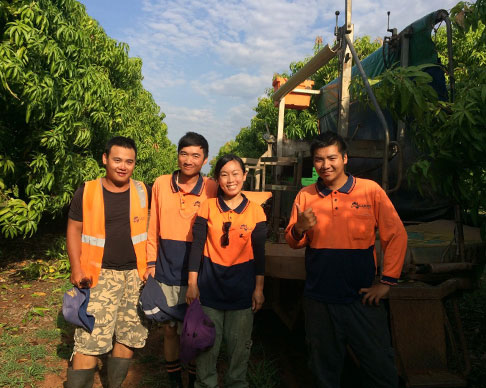Agriculture and farming are some of the ever-growing sectors in the world. Australia is a huge exporter of agricultural, fisheries, and forestry production which accounts for a total of 75% of the entire world’s production. Australia uses nearly 427 million hectares of its land for agricultural purposes. Most of the areas of this country are associated with livestock grazing, whereas cropping and horticulture are done in the areas which are close to the coast.
Australia produces a huge variety of crops including wheat, coarse grains (barley, oats, sorghum, maize, and triticale), rice, oilseeds, sugarcane, cotton, fruits, grain legumes, tobacco, etc. Farmers and farming practices have a great scope in this country. So, it is a good thumbs-up for you if you wish to become a farmer in Australia. But it takes so much to become an impactful farmer in an agriculture-driven country like Australia. Want to become a good farmer? Just visit at agrilabour.com.au and read below to know everything about farming in Australia.
What are the most common farming practices in Australia?
Agriculture is a good contributor to Australia’s GDP. It brings nearly 3% i.e. $50 billion to the Australian GDP and 12% (nearly $150 billion) to the GDP if value-adding processes are included. So, agriculture and farming are some of the most important fields in this country. Australia grows a large variety of crops, fruits, and vegetables.
The recent surveys reveal that the biggest agricultural commodities of this country are grains and oilseeds, which account for 29.8 % of the total agricultural practices. However, other major productions include meat (24%), industrial crops (sugar, wine, and cotton) (13.5%), wool (7%), dairy (6.6%), and horticulture (4.5%).
Important things to consider for being a good farmer in Australia-
- Breeding and feeding- Australia has made a great name in the field of food production and trade. So, food security deals with a major concern in the country. The extensive food production in the country can be seen from the fact that it can produce enough food to feed nearly 60 million people, which is almost three times the present population of Australia. Its net food exports account for more than $30 billion, which indeed makes Australia one of the only 11 countries that can be called net food exporters.
- Being realistic about growth- The productivity growth has served the major population increase in Australia while engaging countless farmers into agriculture and farming. The Australian agriculture Research and Development teams are one of the best ones in the world. So, it is undoubtedly true that this country focuses primarily on the realistic growth of agriculture, farming, and horticulture.
- Quality and quantity of crops- Recent developments in the fields of agriculture and farming in Australia have improved the quality of crops to commendable extents. Apart from this, there is numerous crops that Australia produces on a large scale. These crop productions include wheat, canola, oats, pulses, barley, and sorghum. Working on the betterment of quality along with a significant increase in the quantity has always been the main goal of Australia.
- Biosecurity- Australian agricultural practices have always dealt seriously with food and biosecurity. Maximum efforts have been made to reduce the risks of major as well as minor infectious diseases because of viruses, bacteria and other microorganisms. Neither the people, nor the food should be affected in any way because of these microorganism or parasitic attacks.
- Distribution of crops and livestock- The major factors affecting the distribution of crops and livestock in Australia include technological, biological, and environmental. The technological factors include agricultural practices and managerial decisions. The biological factors include diseases, pests, insects, and weeds, etc. However, the environmental factors include climatic conditions, soil fertility, and water quality, etc. The Research and Development teams of Australia take all these factors into account while redistributing the crops and livestock.
Key responsibilities of a good farmer-
- Off the farm and into the laboratory- Large scale farming systems have been developed in the recent years in Australia. All these farming systems, their entire processes, and results are to be tested repeatedly in laboratories to ensure their productivity and efficiency. Even, the next decade’s plans of Australian farming reveal that satellites will be used to gather data about crops and rangeland health.
- Investments and pay-offs- The key motive of taking Australian farming to a next level is to solve issues related to global food security. Not only finding solutions, but this country aspires to share the solutions with the other countries of the world. Plans are made to set up management, regulatory, and support systems for agriculture and farming in the next decade.
The final thoughts- Australia has made commendable developments in the fields of agriculture and farming. Moreover, the next decade plans for seeing even bigger developments and achievements for ensuring food, bio, and national security by focusing on a disease-free environment for both the people and food.
